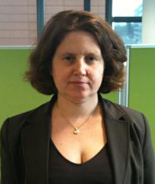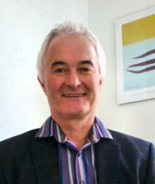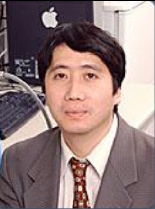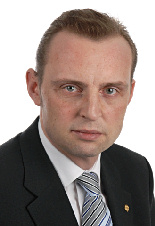
|
Public Safety Future Networks: Industry and Stakeholder views on Emerging Technologies, Standardisation Status & Regulatory Issues
Wireless communications technologies play an important role in emergency and disaster relief situations. Innovative technological solutions are needed to increase data throughputs and interoperability for Public Safety Future Networks. In U.S frequency bands have been identified for Broadband Public Safety services and U.S. made the choice of LTE-A for the new products dedicated to public safety . What is the role of European industry and FP7 research in this field? Which new architectures and networks are needed for a fast deployment in large disasters?
Questions that will be discussed include:
- What lessons can we learn from recent major large disasters?
- End user point of view: what are the needs of end users? What services are they looking for?
- Regulatory issues: is Europe lagging behind compared to U.S.?
- The promise of LTE technology for Public Safety applications. Which new functionalities are needed? What is the impact of mobile applications evolution for PSN terminals? How can technology migration be done?
- Which new architectures have to be put in place for large disasters?
- What are the standardisation issues and bottlenecks for Public Safety applications?
Panel Participants
Isabelle Bucaille
Thales Communications & Security, France (Chair)

Isabelle Bucaille received an engineering degree from ISEP (Institut Supérieur d'lectronique du Nord) in France in 1994. Then she joined the CNI Division of TH-CSF for digital processing studies and MAC simulations for wired and wireless LAN. She participated in 1997 to the ETSI group in charge of HiperLAN2 normalisation. In 1998 she was in charge of system definition concerning Stratospheric Platforms (HAPS). Since September 2001 she is in the Secured Wireless Products (SWP) Activity of THALES Communications, in charge of the new air interface technologies, in particular for single channel wideband systems and research projects involving UWB. She was Work Package leader of different European projects (UCAN, PULSERS I, PULSERS II) on which she worked on MAC layer definition and regulation aspects. Since October 2012 she is Project manager of ABSOLUTE European project and at the end of 2011 she has been appointed TCS representative in 3GPP.
Jim Strother
British Association of Public Safety Communications Officials, UK

Jim Strother currently works in a team providing user input to European Commission-funded research projects, with a focus on communications for disaster management and other emergency responder-related requirements. Until 2012 he led a team providing change management in the Metropolitan Police Command and Control environment and subsequently led on business consultation and support the national digital Airwave radio service, implementing solutions for major events such as Notting Hill Carnival, New Year's Eve and the 2012 Olympic Games. He worked with all the emergency services and other partners to provide interoperability in day-to-day business as well as large public events such as the Notting Hill Carnival, Royal Wedding, G20 and the New Year's Eve celebrations. He contributed to the communications plan for the London 2012 Olympic Games. In 2011 he gave expert evidence on police communications to the enquiry into the fatal terrorist attacks on the London Underground and buses on 7th July 2005. Jim gained his experience serving for 30 years as a Police Officer in a variety of operational and strategic support roles. He started out walking the beat in Paddington, West London and undertook response, community, crime reduction and training roles as he rose to Chief Inspector. In 1999 he was the user lead for the then innovative intranet for the Metropolitan Police, which sparked his interest in the fields of corporate and operational communications
Prof Shigeru Shimamoto
Waseda Univeristy, Japan

Prof. Shigeru Shimamoto's research topics include Wireless Communication Systems, Satellite Communications System, Air-Air/ Air-Ground Communication Systems StratoSpheric Aircraft Communication Systems UAV Communication Emergency Communication Multiple Access Schemes Modulation/Demodulation Schemes Mobile Communications Optical Wireless Communications Body Area Communication Ultra Sonic Communication. He is presently Professor in Waseda University, Japan. He received his B.E. degree in 1985 and M.E. degree in 1987 from University of Electro-Communications, Japan and D.E. degree from Tohoku University, Japan in 1993. He previously worked with NEC Corporation, Japan; as Assistant Prof. in University of Electro-Communications, Japan; as Assistant Prof. in Gunma University, Japan; as Associate Prof. in Waseda University, Japan and Visiting Prof. in Stanford University, U.S.A.
Thomas Weber
European Communications Office, Denmark

Thomas Weber joined the European Communications Office (ECO) in 2010 as expert for spectrum management and is the chairman of the WG FM Maintenance Group on Short Range Devices (SRD/MG). He is also responsible for the frequency management project teams in the WGFM dealing with spectrum monitoring, satellite services, direct-air-to-ground communications and the European Common Allocations Table. Before that he worked for the Federal Network Agency in Germany in 2001-2010 and was the chairman of several ETSI standardization groups dealing with ITS, PMR, DMR, GSM-R and UWB as well as the chairman for the DIN/DKE German National standardization committee on radio devices. He also worked several years for several satellite operators and in the industry in satellite communications. He holds a degree in Communications Engineering acquired at the University of Applied Sciences in Dieburg, Germany.
Serge Delmas
CASSIDIAN SAS, France

Serge Delmas is a Project Manager at Cassidian SAS. He received the diploma degree from "Ecole Supérieure d'Electricité" (Supelec) in France. He joined the company Cassidian as core network software engineer in charge of the expertise of the whole software providing the forwarding of data and voice in public safety networks through infrastructures and through the air interface. In 2006, he became work package manager responsible of coordinating the efforts of software teams on various projects in the telecommunication domain. In 2008, he joined the Research & Technology team in charge of coordinating all the innovative projects related to the telecommunication network product line and Cyber security. He was inter alia, the project manager for Cassidian of several FP7 projects (EULER, HELP) and EUREKA projects (MACICO, ADAX, PREDYKOT). He currently leads SAN project (EUREKA CELTIC framework) aiming at studying ad hoc networks in 4G networks.
|
|


